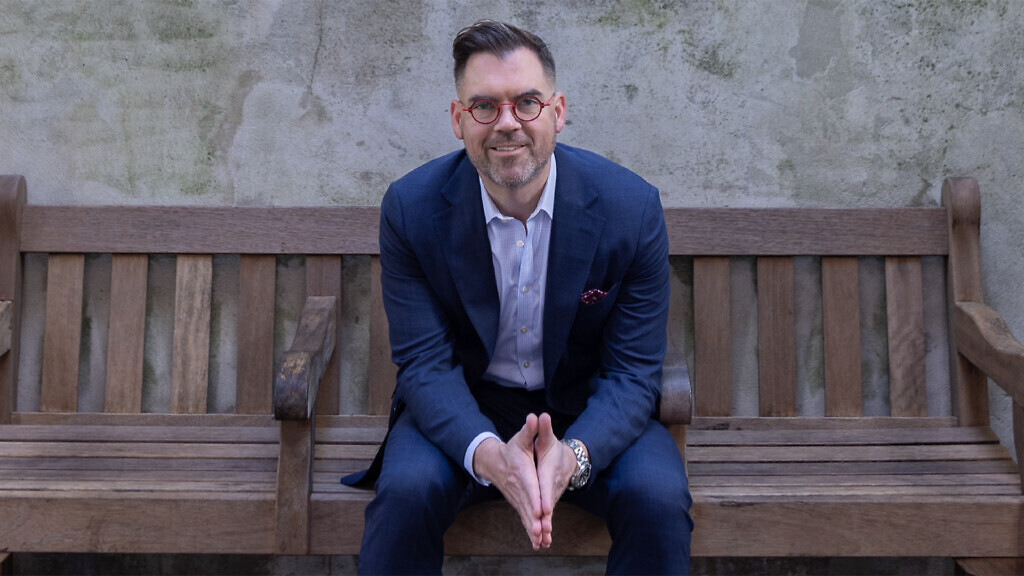Driven by the belief that making a profit and doing good can go hand-in-hand, the emergency physician turned healthcare strategist talks about his ethical approach.
Having practised as an emergency physician before founding ABIG Health, a Washington DC-based firm which advises healthcare organisations on strategy, innovation, telehealth and communications, Dr Adam Brown has seen both sides of the healthcare investment coin.
Driven by the belief that making a profit and doing good can go hand-in-hand, he has developed a rigorous investment strategy that prioritises positive outcomes for all. Working closely with female reproductive health firms and backing women’s health initiatives globally, he’s passionate about the possibilities of femtech investment.
Talking to Healthcare Today at HLTH Europe in Amsterdam, he explains how a desire to only work with those who do good has made a major impact…
Tell us about the aims and aspirations of ABIG Health…
As a healthcare strategist, I advise organisations all of sizes – from startups to hospitals – about accessing the US market, understanding the regulatory landscape, digital strategy and communications.
My goal with ABIG Health was to create meaningful, large-scale impact in healthcare. The company was built on the principle that healthcare innovation should reach millions of people, not just a privileged few. This vision guides every decision we make, from the startups we invest in to the partnerships we form. The “I” in ABIG stands for Impact because we measure success not just by financial returns but by lives improved.
A particular focus area for us is women’s health, which has historically received less than 10% of total healthtech funding. We’re missing 51% of the global population, which is a major misstep, not just from an ethical and healthcare point of view, but also a business and investment perspective.
We see tremendous potential in femtech innovations that address everything from maternal health to menopause care, especially solutions that combine medical rigour with cultural sensitivity.
Why does women’s health receive so little venture capital funding compared to other health sectors?
It stems from deep-rooted systemic issues. First, there’s the historical stigma; for generations, women’s health issues were considered private matters not to be discussed publicly, let alone invested in commercially. This created a vicious cycle where lack of investment led to a lack of research, which reinforced the perception that these weren’t “serious” health issues.
Second, there is a lack of understanding, especially because men make up the vast majority of people working in venture capital firms. There is a fundamental lack of understanding of women’s health. It’s not just period care or miscarriage management; there are a whole host of other things, from bone health to menopause care to cancer care and so on. There’s a whole host of things that we don’t invest in heavily.
Third, the healthcare system itself has traditionally treated women’s health as niche rather than mainstream. Until recently, clinical trials predominantly used male subjects, meaning many treatments weren’t optimised for female biology. This institutional blind spot trickled down to investment priorities.
“My background has taught me to spot solutions that address real pain points.”
Does a background in healthcare inherently help to inform investment opportunities within healthcare?
I believe so. When I was working as an emergency physician, I saw women and men, children, adults and the elderly – opportunities to fix problems across multiple generations and genders.
If I want to impact the lives of people, I need to focus on an area that has often been neglected. My background has taught me to spot solutions that address real pain points.
You’ve supported many good causes, in particular in Haiti, where you’ve invested in training essential midwives and doulas. What was the driving force behind this project?
After the 2010 earthquake, a lot of money flowed in, but a lot of that money was mismanaged. I saw somewhere that had been left behind and an opportunity to help impact the population.
I began to work with two organisations. Nourish Every Child supports children and their families, putting children through school. We now even have some students in medical school.
Midwives For Haiti, meanwhile, aims to train new nurse midwives and doulas in the community, because skilled nurses with birthing experience are rare outside the main towns. The idea was that if we could train more nurse midwives and doulas, not only would we provide new mothers and babies with safety, but we would also provide an economic engine by giving people a skilled job that’s very much needed and has a higher rate of pay.
What is really great about both of these organisations is the focus on long-term impact by resourcing individuals who live on the island.

Talking to Healthcare Today, your client Lara Zibners, founder of Calla Lily Clinical Care, reiterated the importance of ethical and mission-driven founders in attracting the right investors. What’s your take on this?
It is extremely important for me to associate or work with people who are focused on making lives better.
We want to be profitable, of course, but we want to help organisations that are not just focused on profitability and who look at patients and doctors as human beings.
We will turn down opportunities if we do not believe there’s mission alignment. I’m happy with people making a profit, but not on the backs of people who are going to be harmed.
When it comes to medtech investment, you’ve previously said that “the UK has a big opportunity right now”. Does the same hold true for femtech investment?
I’m seeing growing momentum year after year. Adoption, however, takes a long time and getting people engaged is important and has to be resourced appropriately.
When I see governments come out and say that they we want to put a large amount of money in healthtech or AI or femtech, we have to recognise that the population is not always on the same timeline as the government’s desire to balance books.
There is an opportunity in the UK though, especially considering what’s currently happening in the US, which has traditionally been an area heavily focused on innovation in women’s health.



